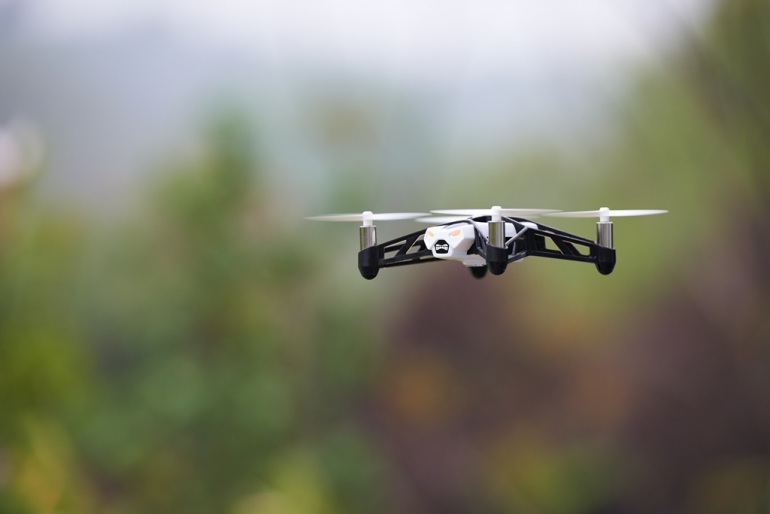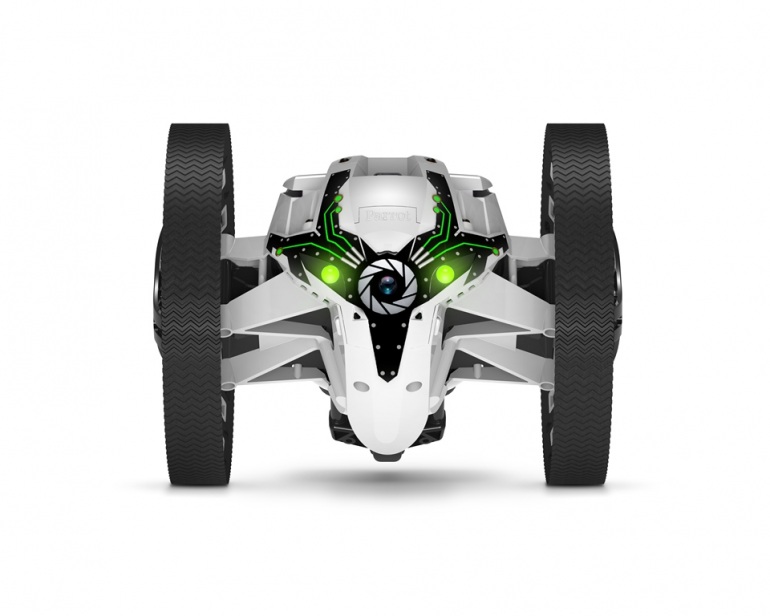Rolling Spider and Jumping Sumo: Drones for home
In a world where infants are learning to interact with iPads before they can even speak, it was only a matter of time before someone made it their mission to put the high-tech into toys.
French company Parrot -- which makes hands-free Bluetooth phone kits for your car as well as civil drones for use in mining and other industries -- has created today’s answer to the remote control car of yesteryear.
The ‘Rolling Spider’ can fly up to 20 metres and do loop-the-loops, while the ‘Jumping Sumo’ can backflip up to 80cm onto a table.
All you need to drive one of these ‘mini-drones’ is your smartphone or tablet (and the rechargeable battery that comes with it).
Mission control comes in the form of the FreeFlight 3 app, which is downloadable for free on Android, iOS and, from October, Windows 8.3 mobile devices.

But while the intuitive app allows you to demonstrate complex acrobatics with a simple tap, swipe or tilt of your mobile device, what’s going on inside these little critters is every bit as high-tech as their bigger brother, the Parrot AR.Drone.
Using Bluetooth to talk to your mobile device’s accelerometer, the Rolling Spider’s vertical camera compares images every 16 milliseconds to determine its flying speed. It uses ultrasound to analyse flight altitude up to four metres -- above that, height is controlled by a pressure sensor.
Super-light at 55g, it can do acrobatics such as 360 flips and, when the included pair of wheels are attached, can “defy gravity” by rolling up the wall and across the ceiling.
“There are a lot of sensors in the product -- it’s a very intelligent product, it’s very easy to pilot and it’s very responsive, all of which are very challenging from a robotics perspective,” says Parrot managing director JPAC Chris Roberts.
Jumping Sumo: Packed with personality

Meanwhile, the Jumping Sumo doesn’t fly but is highly agile and packed full of personality. It includes a set of stickers to customise facial expressions and has three sound profiles to choose from: robot, insect or animal. Its eyes flash red or green depending on whether it’s ready to ‘play’, and it reacts to human touch.
Controlled via Wi-Fi rather than Bluetooth and utilising a patented spring-mounted system, the Jumping Sumo always lands back on its wheels and can travel up to 50 metres compared to the Rolling Spider’s 20 metres. It also sports a front-facing camera that can stream video or send images directly back to the app on your mobile device.
All that technology packed into these tiny toys is the result of years of research and development, with 50 per cent of Parrot’s 900-strong global staff dedicated to R&D.
Roberts says the vision for developing the mini-drones began in 2005 with a Bluetooth-controlled car that had an embedded camera.
“Over five years that evolved with the evolution of the smartphone into the AR.Drone which was the first consumer-based quadricopter, which we launched in 2010,” Roberts says.
Depending on which model you buy, the AR.Drone -- which Parrot has sold around 700,000 of -- costs up to $500. With these new toys however, Parrot has brought the price of its consumer drones down to $139 (Rolling Spider) and $219 (Jumping Sumo).
“We’re putting technology into toys because this is about having fun, getting kids off the couch and getting families to do something together,” Roberts says.
That proposition is certainly compelling and these little critters are affordable and compact enough to fill many a stocking this Christmas.
But with a fairly short battery life (eight to 12 minutes for the Rolling Spider and 20 minutes for the Jumping Sumo) it will be a case of wait-and-see as to what Parrot will achieve with its next generation of mini-drones.
















